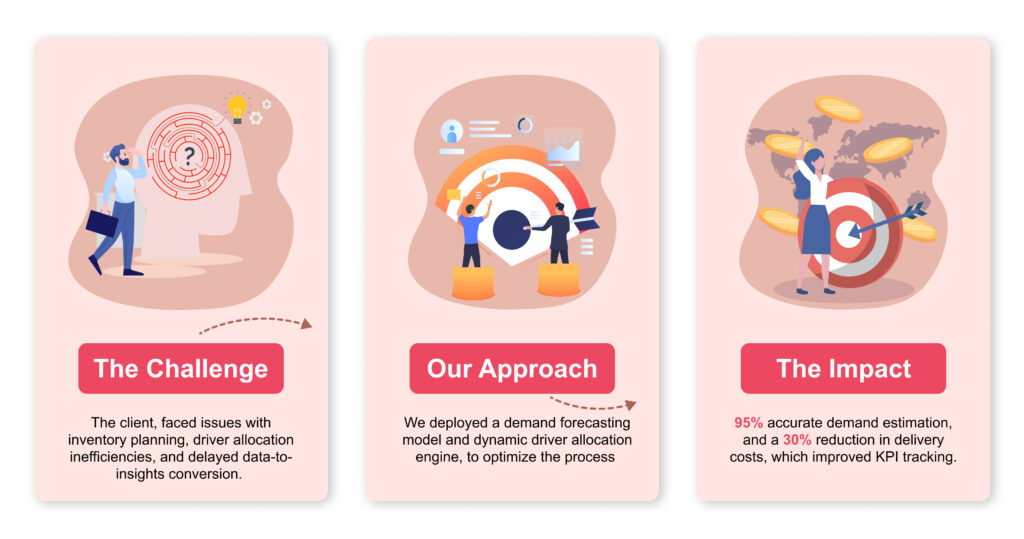Meeting The Success Of Route Optimization With The Power Of Dynamic Driver Allocation

Introducing The Client
We proudly introduce our client, a dynamic Chicago-based healthy food delivery start-up. Their innovative hub-and-spoke distribution model and a user-friendly web/app platform empower customers to order nutritious food through pre-orders or on-demand requests seamlessly. This forward-thinking company is dedicated to transforming the way people access and enjoy healthy meals, making nutritious dining a convenient and enjoyable experience.
Problem:
Our client faced inventory management issues due to a lack of demand foresight, inefficient driver allocation leading to delivery cost inefficiencies, and delayed data-to-insight conversion for business metrics.
Solution:
We addressed these challenges with advanced demand forecasting for inventory, data-driven driver allocation strategies, and streamlined data analytics for real-time insights.
Hesitations:
Client hesitations included concerns about technology integration, operational disruptions, and the need for employee training, but the client recognized the necessity of overcoming these hurdles for improved operations.
Building he Power of Data-Driven Demand Forecasting and Dynamic Driver Allocation
We implemented a two-pronged approach to address the client’s challenges. Firstly, we designed and deployed a demand forecasting model that harnessed historical order patterns. This model accurately estimated the expected number of meals (demand) across various time slots, including lunch, dinner, and peak/shoulder demand periods, as well as specific delivery zones.
Secondly, we introduced a dynamic driver allocation engine that optimized the allocation of drivers across different zones and time slots. This allocation was based on the forecasted demands, ensuring that the right number of drivers were efficiently deployed, enhancing delivery efficiency, and reducing costs for our client.
Transformative Impacts of Data-Driven Solutions
The demand forecasting model achieved an impressive 95% accuracy in estimating upcoming demands, leading to more efficient kitchen and inventory planning. Simultaneously, the introduction of a dynamic driver allocation engine and route optimization slashed delivery costs by a substantial 30%, providing significant cost savings for the client.
To Know More About How To Streamline Operations And Define Your Position In The Competitive Landscape Of Food Delivery.



